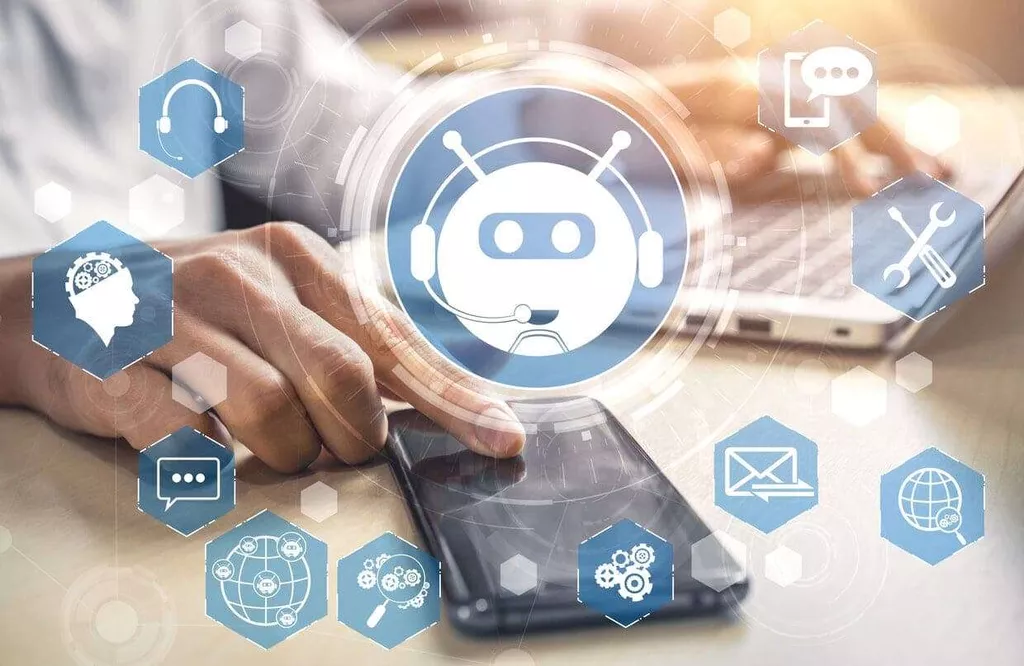What is Cognitive Automation? Evolving the Workplace

“RPA is a technology that takes the robot out of the human, whereas cognitive automation is the putting of the human into the robot,” said Wayne Butterfield, a director at ISG, a technology research and advisory firm. CIOs also need to address different considerations when working with each of the technologies. RPA is typically programmed upfront but can break when the applications it works with change. Cognitive automation requires more in-depth training and may need updating as the characteristics of the data set evolve. But at the end of the day, both are considered complementary rather than competitive approaches to addressing different aspects of automation. Thus, Cognitive Automation can not only deliver significantly higher efficiency by automating processes end to end but also expand the horizon of automation by enabling many more use-cases that are not feasible with standard automation capability.
The field of cognitive automation is rapidly evolving, and several key trends and advancements are expected to redefine how AI technologies are utilized and integrated into various industries. You can foun additiona information about ai customer service and artificial intelligence and NLP. These services convert spoken language into text and vice versa, enabling applications to process spoken commands, transcribe audio recordings, and generate natural-sounding speech output. ML-based automation can streamline recruitment by automatically screening resumes, extracting relevant information such as skills and experience, and ranking candidates based on predefined criteria. This accelerates candidate shortlisting and selection, saving time and effort for HR teams. This streamlines the ticket resolution process, reduces response times, and enhances customer satisfaction.
A cognitive automation solution may just be what it takes to revitalize resources and take operational performance to the next level. Through cognitive automation, it is possible to automate most of the essential routine steps involved in claims processing. These tools can port over your customer data from claims forms that have already been filled into your customer database. It can also scan, digitize, and port over customer data sourced from printed claim forms which would traditionally be read and interpreted by a real person.
Therefore, cognitive automation knows how to address the problem if it reappears. With time, this gains new capabilities, making it better suited to handle complicated problems and a variety of exceptions. ServiceNow’s onboarding procedure starts before the new employee’s first work day. It handles all the labor-intensive processes involved in settling the employee in. These include setting up an organization account, configuring an email address, granting the required system access, etc. Comparing RPA vs. cognitive automation is “like comparing a machine to a human in the way they learn a task then execute upon it,” said Tony Winter, chief technology officer at QAD, an ERP provider.
As companies build digital capabilities, there is a temptation to focus on the most supportive functions to claim an early win. This may work in the short term, but it will ultimately reinforce the old supply chain model where functional excellence does not lead to a superior customer experience or reduced cost. Insist on re-imagining traditional processes and building cross-functional workflows where different functions and capabilities can improve business outcomes. However, there are times when information is incomplete, requires additional enhancement or combines with multiple sources to complete a particular task.
5 Automation Products to Watch in 2024 – Acceleration Economy
5 Automation Products to Watch in 2024.
Posted: Fri, 19 Jan 2024 08:00:00 GMT [source]
Once implemented, the solution aids in maintaining a record of the equipment and stock condition. Every time it notices a fault or a chance that an error will occur, it raises an alert. “A human traditionally had to make the decision or execute the request, but now the software is mimicking the human decision-making activity,” Knisley said. “Cognitive automation, however, unlocks many of these constraints by being able to more fully automate and integrate across an entire value chain, and in doing so broaden the value realization that can be achieved,” Matcher said. Cognitive automation can continuously monitor patient vital signs, detect deviations from normal ranges, and alert healthcare providers to potential health risks or emergencies. Automated diagnostic systems can provide accurate and timely insights, aiding in early detection and treatment planning.
In essence, cognitive automation emerges as a game-changer in the realm of automation. It blends the power of advanced technologies to replicate human-like understanding, reasoning, and decision-making. By transcending the limitations of traditional automation, cognitive automation empowers businesses to achieve unparalleled levels of efficiency, productivity, and innovation.
Overcoming Digital Transformation Roadblocks: How to Successfully Scale Intelligent Automation
Many of them have achieved significant optimization of this challenge by adopting cognitive automation tools. Intelligent automation simplifies processes, frees up resources and improves operational efficiencies through various applications. An insurance provider can use intelligent automation to calculate payments, estimate rates and address compliance needs. Microsoft Cognitive Services is a platform that provides a wide range of APIs and services for implementing cognitive automation solutions. QnA Maker allows developers to create conversational question-and-answer experiences by automatically extracting knowledge from content such as FAQs, manuals, and documents.
While many companies already use rule-based RPA tools for AML transaction monitoring, it’s typically limited to flagging only known scenarios. Such systems require continuous fine-tuning and updates and fall short of connecting the dots between any previously unknown combination of factors. While technologies have shown strong gains in terms of productivity and efficiency, “CIO was to look way beyond this,” said Tom Taulli author of The Robotic Process Automation Handbook.
Transforming the process industry with four levels of automation CAPRI Project Results in brief H2020 – Cordis News
Transforming the process industry with four levels of automation CAPRI Project Results in brief H2020.
Posted: Wed, 15 May 2024 07:00:00 GMT [source]
The value of intelligent automation in the world today, across industries, is unmistakable. With the automation of repetitive tasks through IA, businesses can reduce their costs and establish more consistency within their workflows. The COVID-19 pandemic has only expedited digital transformation efforts, fueling more investment within infrastructure to support automation.
In this case, cognitive automation takes this process a step further, relieving humans from analyzing this type of data. Similar to the aforementioned AML transaction monitoring, ML-powered bots can judge situations based on the context and real-time analysis of external sources like mass media. Unlike other types of AI, such as machine learning, or deep learning, cognitive automation solutions imitate the way humans think.
The automation footprint could scale up with improvements in cognitive automation components. As CIOs embrace more automation tools like RPA, they should also consider utilizing cognitive automation for higher-level tasks to further improve business processes. RPA tools were initially used to perform repetitive tasks with greater precision and accuracy, which has helped organizations reduce back-office costs and increase productivity. While basic tasks can be automated using RPA, subsequent tasks require context, judgment and an ability to learn. Cognitive automation can use AI techniques in places where document processing, vision, natural language and sound are required, taking automation to the next level. Traditional RPA is mainly limited to automating processes (which may or may not involve structured data) that need swift, repetitive actions without much contextual analysis or dealing with contingencies.
Push is on for more artificial intelligence in supply chains
As AI technologies become more pervasive, ethical considerations such as fairness, transparency, privacy, and accountability are increasingly coming to the forefront. XAI aims to address this challenge by developing AI models and algorithms that explain their decisions and predictions. This flexibility makes Cognitive Services accessible to developers and organizations of all sizes. Microsoft offers a range of pricing tiers and options for Cognitive Services, including free tiers with limited usage quotas and paid tiers with scalable usage-based pricing models. Microsoft Cognitive Services is a cloud-based platform accessible through Azure, Microsoft’s cloud computing service.
- As an example, companies can deploy demand sensing and prediction algorithms to better match supply and demand if they have higher incidence of stockouts.
- This article will explain to you in detail which cognitive automation solutions are available for your company and hopefully guide you to the most suitable one according to your needs.
- RPA automates routine and repetitive tasks, which are ordinarily carried out by skilled workers relying on basic technologies, such as screen scraping, macro scripts and workflow automation.
- Cognitive automation creates new efficiencies and improves the quality of business at the same time.
- No longer are we looking at Robotic Process Automation (RPA) to solely improve operational efficiencies or provide tech-savvy self-service options to customers.
Typically this refers to operations within a warehouse or distribution center, with broader tasks undertaken by supply chain engineering systems and enterprise resource planning systems. It can range from simple on-off control to multi-variable high-level algorithms in terms of control complexity. Complicated systems, such as modern factories, airplanes, and ships typically use combinations of all of these techniques.
Another important use case is attended automation bots that have the intelligence to guide agents in real time. By enabling the software bot to handle this common manual task, the accounting team can spend more time analyzing vendor payments and possibly identifying areas to improve the company’s cash flow. This lack of visibility means that most supply chain operations are fundamentally reactive—constantly catching up with events. Research from the IBM Institute for Business Value has shown that Fortune 500 companies lose anywhere from 2% to 5% of revenue due to misplacement of inventory or production of incorrect SKU and channel mix. No longer are we looking at Robotic Process Automation (RPA) to solely improve operational efficiencies or provide tech-savvy self-service options to customers.
Programs to control machine operation are typically stored in battery-backed-up or non-volatile memory. It was a preoccupation of the Greeks and Arabs (in the period between about 300 BC and about 1200 AD) to keep accurate track of time. In Ptolemaic Egypt, about 270 BC, Ctesibius described a float regulator for a water clock, a device not unlike the ball and cock in a modern flush toilet. This was the earliest feedback-controlled mechanism.[13] The appearance of the mechanical clock in the 14th century made the water clock and its feedback control system obsolete. There may be a thousand different ways in which procreating robots will impact various sectors.
Cognitive automation is an umbrella term for software solutions that leverage cognitive technologies to emulate human intelligence to perform specific tasks. Advantages resulting from cognitive automation also include improvement in compliance and overall business quality, greater operational scalability, reduced turnaround, and lower error rates. All of these have a positive impact on business flexibility and employee efficiency.
“The ability to handle unstructured data makes intelligent automation a great tool to handle some of the most mission-critical business functions more efficiently and without human error,” said Prince Kohli, CTO of Automation Anywhere. He sees cognitive automation improving other areas like healthcare, where providers must handle millions of forms of all shapes and sizes. Employee time would be better spent caring for people rather than tending to processes and paperwork. AI has enabled the digital twin to provide visibility of events across customers, suppliers manufacturing locations and third-party logistics, and it has enhanced ability of companies to understand their operations real time. Industrial automation deals primarily with the automation of manufacturing, quality control, and material handling processes.
Cognitive automation
You might be surprised to find out that type 2 diabetes and prediabetes can significantly impact brain health and long-term cognitive function. According to a new longitudinal study from Karolinska Institutet in Sweden, published on August 28, 2024, in Diabetes Care, both conditions are linked to accelerated brain aging. Here’s a closer look at what the study found and how you can protect your brain health. “The problem is that people, when asked to explain a process from end to end, will often group steps or fail to identify a step altogether,” Kohli said. To solve this problem vendors, including Celonis, Automation Anywhere, UiPath, NICE and Kryon, are developing automated process discovery tools.

Solenoid valves are widely used on compressed air or hydraulic fluid for powering actuators on mechanical components. PLCs can range from small “building brick” devices with tens of I/O in a housing integral with the processor, to large rack-mounted modular devices with a count of thousands of I/O, and which are often networked to other PLC and SCADA systems. Technologies like solar panels, wind turbines, and other renewable energy sources—together with smart grids, micro-grids, battery storage—can automate power production. In 1959 Texaco’s Port Arthur Refinery became the first chemical plant to use digital control.[37]
Conversion of factories to digital control began to spread rapidly in the 1970s as the price of computer hardware fell. Please be informed that when you click the Send button Itransition Group will process your personal data in accordance with our Privacy notice for the purpose of providing you with appropriate information. According to Deloitte’s 2019 Automation with Intelligence report, many companies haven’t yet considered how many of their employees need reskilling as a result of automation.
For example, a cognitive automation application might use a machine learning algorithm to determine an interest rate as part of a loan request. Another viewpoint lies in thinking about how both approaches complement process improvement initiatives, said James Matcher, partner in the technology consulting practice at EY, a multinational professional services network. Process automation remains the foundational premise of both RPA and cognitive automation, by which tasks and processes executed by humans are now executed by digital workers.
This can aid the salesman in encouraging the buyer just a little bit more to make a purchase. To assure mass production of goods, today’s industrial procedures incorporate a lot of automation. In this situation, if there are difficulties, the solution checks them, fixes them, or, as soon as possible, forwards the problem to a human operator to avoid further delays.

Machine learning helps the robot become more accurate and learn from exceptions and mistakes, until only a tiny fraction require human intervention. The past few decades of enterprise automation have seen great efficiency automating repetitive functions that require integration or interaction across a range of systems. Businesses are having success when it comes to automating simple and repetitive tasks that might be considered busywork for human employees.
But combined with cognitive automation, RPA has the potential to automate entire end-to-end processes and aid in decision-making from both structured and unstructured data. The biggest challenge is that cognitive automation requires customization and integration work specific to each enterprise. This is less of an issue when cognitive automation services are only used for straightforward tasks like using OCR and machine vision to automatically interpret an invoice’s text and structure.
Accounting departments can also benefit from the use of Chat GPT, said Kapil Kalokhe, senior director of business advisory services at Saggezza, a global IT consultancy. For example, accounts payable teams can automate the invoicing process by programming the software bot to receive invoice information — from an email or PDF file, for example — and enter it into the company’s accounting system. In this example, the software bot mimics the human role of opening the email, extracting the information from the invoice and copying the information into the company’s accounting system. In another example, Deloitte has developed a cognitive automation solution for a large hospital in the UK. The NLP-based software was used to interpret practitioner referrals and data from electronic medical records to identify the urgency status of a particular patient.
He expects cognitive automation to be a requirement for virtual assistants to be proactive and effective in interactions where conversation and content intersect. One concern when weighing the pros and cons of RPA vs. cognitive automation is that more complex ecosystems may increase the likelihood that systems will behave unpredictably. CIOs will need to assign responsibility for training the machine learning (ML) models as part of their cognitive automation initiatives.
Critical areas of AI research, such as deep learning, reinforcement learning, natural language processing (NLP), and computer vision, are experiencing rapid progress. This approach empowers humans with AI-driven insights, recommendations, and automation tools while preserving human oversight and judgment. We will examine the availability and features of Microsoft Cognitive Services, a leading solution provider for cognitive automation. Assemble a team with diverse skill sets, including domain expertise, technical proficiency, project management, and change management capabilities. This team will identify automation opportunities, develop solutions, and manage deployment. They’re integral to cognitive automation as they empower systems to comprehend and act upon content in a human-like manner.
Applications are bound to face occasional outages and performance issues, making the job of IT Ops all the more critical. Here is where AIOps simplifies the resolution of issues, even proactively, before it leads to a loss in revenue or customers. We won’t go much deeper into the technicalities of Machine Learning here but if you are new to the subject and want to dive into the matter, have a look at our beginner’s guide to how machines learn. Our mission is to inspire humanity to adapt and thrive by harnessing emerging technology. Multi-modal AI systems that integrate and synthesize information from multiple data sources will open up new possibilities in areas such as autonomous vehicles, smart cities, and personalized healthcare.
“Cognitive automation multiplies the value delivered by traditional automation, with little additional, and perhaps in some cases, a lower, cost,” said Jerry Cuomo, IBM fellow, vice president and CTO at IBM Automation. CIOs should consider how different flavors of AI can synergize to increase the value of different types of automation. “Cognitive automation can be the differentiator and value-add CIOs need to meet and even exceed heightened expectations in today’s enterprise environment,” said Ali Siddiqui, chief product officer at BMC. Cognitive computing systems become intelligent enough to reason and react without needing pre-written instructions. Workflow automation, screen scraping, and macro scripts are a few of the technologies it uses. Depending on where the consumer is in the purchase process, the solution periodically gives the salespeople the necessary information.
The form could be submitted to a robot for initial processing, such as running a credit score check and extracting data from the customer’s driver’s license or ID card using OCR. One of the most exciting ways to put these applications and technologies to work is in omnichannel communications. Today’s customers interact with your organization across a range of touch points and channels – chat, interactive IVR, apps, messaging, and more. When you integrate RPA with cognitive automation these channels, you can enable customers to do more without needing the help of a live human representative. Automated process bots are great for handling the kind of reporting tasks that tend to fall between departments. If one department is responsible for reviewing a spreadsheet for mismatched data and then passing on the incorrect fields to another department for action, a software agent could easily manage every step for which the department was responsible.
The Cognitive Automation system gets to work once a new hire needs to be onboarded. RPA usage has primarily focused on the manual activities of processes and was largely used to drive a degree of process efficiency and reduction of routine manual processing. IBM’s cognitive Automation Platform is a Cloud based PaaS solution that enables Cognitive conversation with application users or automated alerts to understand a problem and get it resolved. It is made up of two distinct Automation areas; Cognitive Automation and Dynamic Automation.
This includes applications that automate processes that automatically learn, discover, and make recommendations or predictions. Overall, cognitive software platforms will see investments of nearly $2.5 billion this year. Spending on cognitive-related IT and business services will be more than $3.5 billion and will enjoy a five-year CAGR of nearly 70%. IA is capable of advanced data analytics techniques to process and interpret large volumes of data quickly and accurately. This enables organizations to gain valuable insights into their processes so they can make data-driven decisions.
“As automation becomes even more intelligent and sophisticated, the pace and complexity of automation deployments will accelerate,” predicted Prince Kohli, CTO at Automation Anywhere, a leading RPA vendor. It gives businesses a competitive advantage by enhancing their operations in numerous areas. New insights could be revealed thanks to cognitive computing’s capacity to take in various data properties and grasp, analyze, and learn from them. These prospective answers could be essential in various fields, particularly life science and healthcare, which desperately need quick, radical innovation.
Cognitive automation: augmenting bots with intelligence
These conversational agents use natural language processing (NLP) and machine learning to interact with users, providing assistance, answering questions, and guiding them through workflows. A self-driving enterprise is one where the cognitive automation platform acts as a digital brain that sits atop and interconnects all transactional systems within that organization. This “brain” is able to comprehend all of the company’s operations and replicate them at scale. Cognitive automation may also play a role in automatically inventorying complex business processes. For example, don’t just focus on demand sensing capabilities; also train AI models for intelligent planning and risk mitigation. Insist on building automated sales and operation execution (S&OE) workflows wherein recent changes in demand patterns can be seamlessly propagated to inventory deployment and logistics.
The applications of IA span across industries, providing efficiencies in different areas of the business. These services use machine learning and AI technologies to analyze and interpret different types of data, including text, images, speech, and video. Implementing chatbots powered by machine learning algorithms enables organizations to provide instant, personalized customer assistance 24/7. Machine learning techniques like OCR can create tools that allow customers to build custom applications for automating workflows that previously required intensive human labor. This process employs machine learning to transform unstructured data into structured data.
Computers can perform both sequential control and feedback control, and typically a single computer will do both in an industrial application. Programmable logic controllers (PLCs) are a type of special-purpose microprocessor that replaced many hardware components such as timers and drum sequencers used in relay logic–type systems. General-purpose process control computers have increasingly replaced stand-alone controllers, with a single computer able to perform the operations of hundreds of controllers. They can also analyze data and create real-time graphical displays for operators and run reports for operators, engineers, and management. Logistics automation is the application of computer software or automated machinery to improve the efficiency of logistics operations.
TalkTalk received a solution from Splunk that enables the cognitive solution to manage the entire backend, giving customers access to an immediate resolution to their issues. Identifying and disclosing any network difficulties has helped TalkTalk enhance its network. As a result, they have greatly decreased the frequency of major incidents and increased uptime. The issues faced by Postnord were addressed, and to some extent, reduced, by Digitate‘s ignio AIOps Cognitive automation solution.
They analyze vast data, consider multiple variables, and generate responses or actions based on learned patterns. Start automating instantly with FREE access to full-featured automation with Cloud Community Edition.

According to experts, cognitive automation is the second group of tasks where machines may pick up knowledge and make decisions independently or with people’s assistance. “RPA is a great way to start automating processes and cognitive automation is a continuum of that,” said Manoj Karanth, vice president and global head of data science and engineering at Mindtree, a business consultancy. Conversely, cognitive automation learns the intent of a situation using available senses to execute a task, similar to the way humans learn. It then uses these senses to make predictions and intelligent choices, thus allowing for a more resilient, adaptable system. Newer technologies live side-by-side with the end users or intelligent agents observing data streams — seeking opportunities for automation and surfacing those to domain experts. In addition, cognitive automation tools can understand and classify different PDF documents.

Although nanobots are much smaller as compared to xenobots, both are used to perform tasks that require the invasion of micro-spaces to carry out ultra-sensitive operations. Technologies such as AI and robotics, combined with stem cell technology, allow such robots to perfectly blend in with other cells and tissues if they enter the human body for futuristic healthcare-related purposes. One of the biggest advantages of xenobots is their stealthy nature, which enables them to blend in with the surroundings during any operation. Claims processing, one of the most fundamental operations in insurance, can be largely optimized by cognitive automation. Many insurance companies have to employ massive teams to handle claims in a timely manner and meet customer expectations.
- By transforming work systems through cognitive automation, organizations are provided with vast strategic opportunities to gain business value.
- Cognitive automation represents a range of strategies that enhance automation’s ability to gather data, make decisions, and scale automation.
- RPA tools were initially used to perform repetitive tasks with greater precision and accuracy, which has helped organizations reduce back-office costs and increase productivity.
- Attempts to use analytics and create data lakes are viable options that many companies have adopted to try and maximize the value of their available data.
- Step into the realm of technological marvels, where the lines between humans and machines blur and innovation takes flight.
Type 2 diabetes and prediabetes can impact brain health and long-term cognitive function, but a healthy lifestyle can lessen this impact. “The whole process of categorization was carried out manually by a human workforce and was prone to errors and inefficiencies,” Modi said. All rights are reserved, including those for text and data mining, AI training, and similar technologies. Suppose that the motor in the example is powering machinery that has a critical need for lubrication. In this case, an interlock could be added to ensure that the oil pump is running before the motor starts. Timers, limit switches, and electric eyes are other common elements in control circuits.
“One of the biggest challenges for organizations that have embarked on automation initiatives and want to expand their automation and digitalization footprint is knowing what their processes are,” Kohli said. “The biggest challenge is data, access to data and figuring out where to get started,” Samuel said. All cloud platform providers have made many of the applications for weaving together machine learning, big data and AI easily accessible. The supply chains of the future will need intelligence, speed and agility to meet growing expectations of consumers and B2B partners. The next generation of supply chains embedded with exponential technologies will be able to predict, prepare and respond to rapidly evolving demand and a continually changing product and channel mix. Or, dynamic interactive voice response (IVR) can be used to improve the IVR experience.
By addressing challenges like data quality, privacy, change management, and promoting human-AI collaboration, businesses can harness the full benefits of cognitive process automation. Embracing this paradigm shift unlocks a new era of productivity and competitive advantage. Prepare for a future where machines and humans unite to achieve extraordinary results. Cognitive automation, or IA, combines artificial intelligence with robotic process automation to deploy intelligent digital workers that streamline workflows and automate tasks. It can also include other automation approaches such as machine learning (ML) and natural language processing (NLP) to read and analyze data in different formats. For example, Automating a process to create a support ticket when a database size runs over is easy and all it needs is a simple script that can check the DB frequently and when needed, log in to the ticketing tool to generate a ticket that a human can act on.
Early development of sequential control was relay logic, by which electrical relays engage electrical contacts which either start or interrupt power to a device. Relays were first used in telegraph networks before being developed for controlling other devices, https://chat.openai.com/ such as when starting and stopping industrial-sized electric motors or opening and closing solenoid valves. Using relays for control purposes allowed event-driven control, where actions could be triggered out of sequence, in response to external events.
Key distinctions between robotic process automation (RPA) vs. cognitive automation include how they complement human workers, the types of data they work with, the timeline for projects and how they are programmed. When determining what tasks to automate, enterprises should start by looking at whether the process workflows, tasks and processes can be improved or even eliminated prior to automation. There are some obvious things to automate within an enterprise that provide short-term ROI — repetitive, boring, low-value busywork, like reporting tasks or data management or cleanup, that can easily be passed on to a robot for process automation. With disconnected processes and customer data in multiple systems, resolving a single customer service issue could mean accessing dozens of different systems and sources of data. To bridge the disconnect, intelligent automation ties together disparate systems on premises and/or in cloud, provides automatic handling of customer data requirements, ensures compliance and reduces errors.
The adoption of cognitive RPA in healthcare and as a part of pharmacy automation comes naturally. Moreover, clinics deal with vast amounts of unstructured data coming from diagnostic tools, reports, knowledge bases, the internet of medical things, and other sources. This causes healthcare professionals to spend inordinate amounts of time and concentration to interpret this information.
Deliveries that are delayed are the worst thing that can happen to a logistics operations unit. The parcel sorting system and automated warehouses present the most serious difficulty. The automation solution also foresees the length of the delay and other follow-on effects. As a result, the company can organize and take the required steps to prevent the situation. The Cognitive Automation solution from Splunk has been integrated into Airbus’s systems. Splunk’s dashboards enable businesses to keep tabs on the condition of their equipment and keep an eye on distant warehouses.
One area currently under development is the ability for machines to autonomously discover and optimize processes within the enterprise. Some automation tools have started to combine automation and cognitive technologies to figure out how processes are configured or actually operating. And they are automatically able to suggest and modify processes to improve overall flow, learn from itself to figure out better ways to handle process flow and conduct automatic orchestration of multiple bots to optimize processes. For example, Digital Reasoning’s AI-powered process automation solution allows clinicians to improve efficiency in the oncology sector. With the help of deep learning and artificial intelligence in radiology, clinicians can intelligently assess pathology and radiology reports to understand the cancer cases presented and augment subsequent care workflows accordingly. These skills, tools and processes can make more types of unstructured data available in structured format, which enables more complex decision-making, reasoning and predictive analytics.
Cognitive automation tools are relatively new, but experts say they offer a substantial upgrade over earlier generations of automation software. Now, IT leaders are looking to expand the range of cognitive automation use cases they support in the enterprise. Since its cognitive supply chain became operational globally, IBM has saved USD 160 million related to manufacturing optimization, reduced inventory costs, optimized shipping costs, better decision-making and time savings. Chief supply chain officers (CSCOs) have once-in-a-generation opportunity to pivot from cost-focused reactive operations to running a resilient and agile value chain.
Automated processes can only function effectively as long as the decisions follow an “if/then” logic without needing any human judgment in between. However, this rigidity leads RPAs to fail to retrieve meaning and process forward unstructured data. The CoE assesses integration requirements with existing systems and processes, ensuring seamless interoperability between RPA bots and other applications or data sources.
Disruptive technologies like cognitive automation are often met with resistance as they threaten to replace most mundane jobs. Anyone who has been following the Robotic Process Automation (RPA) revolution that is transforming enterprises worldwide has also been hearing about how artificial intelligence (AI) can augment traditional RPA tools to do more than just RPA alone can achieve. Cognitive automation can uncover patterns, trends and insights from large datasets that may not be readily apparent to humans. To reap the highest rewards and return on investment (ROI) for your automation project, it’s important to know which tasks or processes to automate first so you know your efforts and financial investments are going to the right place. To manage this enormous data-management demand and turn it into actionable planning and implementation, companies must have a tool that provides enhanced market prediction and visibility.
The foundation of cognitive automation is software that adds intelligence to information-intensive processes. It is frequently referred to as the union of cognitive computing and robotic process automation (RPA), or AI. Businesses are increasingly adopting cognitive automation as the next level in process automation. These six use cases show how the technology is making its mark in the enterprise. Processing claims is perhaps one of the most labor-intensive tasks faced by insurance company employees and thus poses an operational burden on the company.
Among them are the facts that cognitive automation solutions are pre-trained to automate specific business processes and hence need fewer data before they can make an impact; they don’t require help from data scientists and/or IT to build elaborate models. They are designed to be used by business users and be operational in just a few weeks. Since cognitive automation can analyze complex data from various sources, it helps optimize processes.







